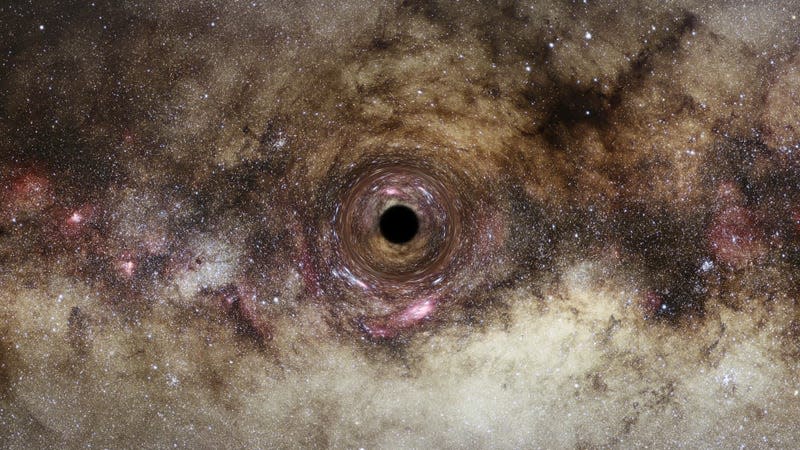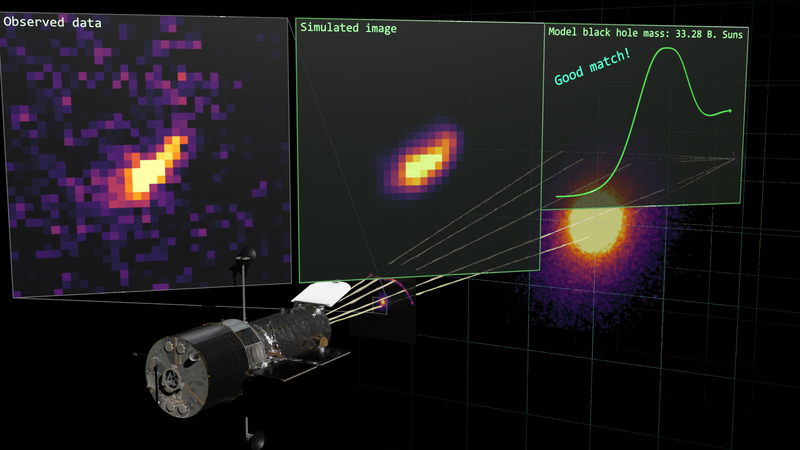Bent Light in Deep Space Reveals One of the Biggest Black Holes Ever Detected

An artist’s depiction of a black hole warping light around it.
Holy smokes. A group of astronomers have found a black hole containing (checks notes) 30 billion times the mass of our Sun. That’s more than seven thousand times the size of the supermassive black hole at the center of the Milky Way.
The team used gravitational lensing to see the black hole. In this natural phenomenon, massive objects’ gravitational fields bend photons of light magnifying and warping them—making it possible to see object that would otherwise be hidden or too faint. Last year, a team spotted the oldest known star in an arc of gravitationally lensed light.
Read more
These Winning Close-Up Photos Show Life That's Often Overlooked
Remembering Enterprise: The Test Shuttle That Never Flew to Space
According to a Durham University release, the newly detected black hole is the first ever found using gravitational lensing. A paper about the discovery is published today in the Monthly Notices of the Royal Astronomical Society.
“This particular black hole, which is roughly 30 billion times the mass of our Sun, is one of the biggest ever detected and on the upper limit of how large we believe black holes can theoretically become, so it is an extremely exciting discovery,” said James Nightingale, a physicist at Durham University, in the university release.
The team identified the black hole by modeling the different pathways light might take through the universe, depending on the presence of black holes of varying mass. They then compared the computer data with images of the cosmos taken by the Hubble Space Telescope. Lo and behold, they found a match.

The biggest known black hole is TON 618, a 40-billion-solar-mass black hole sitting 10.37 billion light-years away, according to LiveScience. Ultramassive black holes are classified as those between 10 billion and 40 billion solar masses, according to NASA.
“Gravitational lensing makes it possible to study inactive black holes, something not currently possible in distant galaxies,” Nightingale added. “This approach could let us detect many more black holes beyond our local universe and reveal how these exotic objects evolved further back in cosmic time.”
In other words, even those black holes quietly lurking in space—not the active galactic nuclei that are accreting superheated material and spewing energy out into space—can be studied and incorporated into black hole datasets.
Finding more black holes of such gargantuan scale could also help astrophysicists figure out an enduring puzzle: exactly how black holes grow and what defines the limits of their size.
Clarification: Due to an editing error, an earlier version of this article stated that the newly discovered black hole is “more than seven times the size of the supermassive black hole at the center of the Milky Way.” While that’s technically accurate, the black hole is in fact over 7,000 times the size of the Milky Way’s central black hole.
More: Astronomers Spot Two Supermassive Black Holes on a Collision Course
More from Gizmodo
Sign up for Gizmodo's Newsletter. For the latest news, Facebook, Twitter and Instagram.

